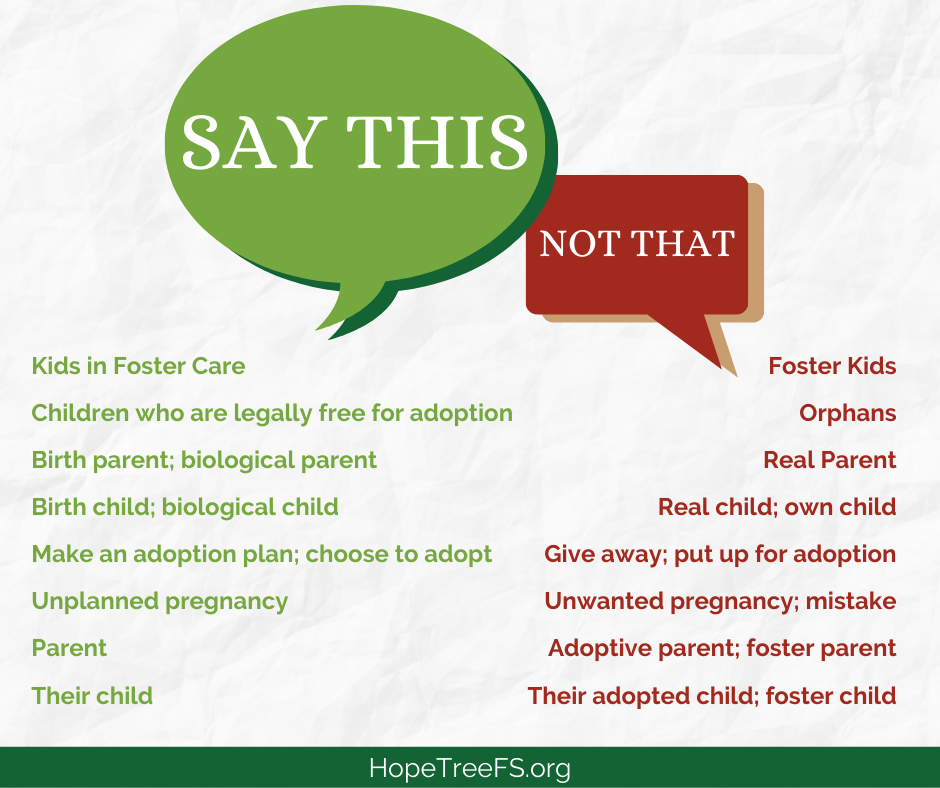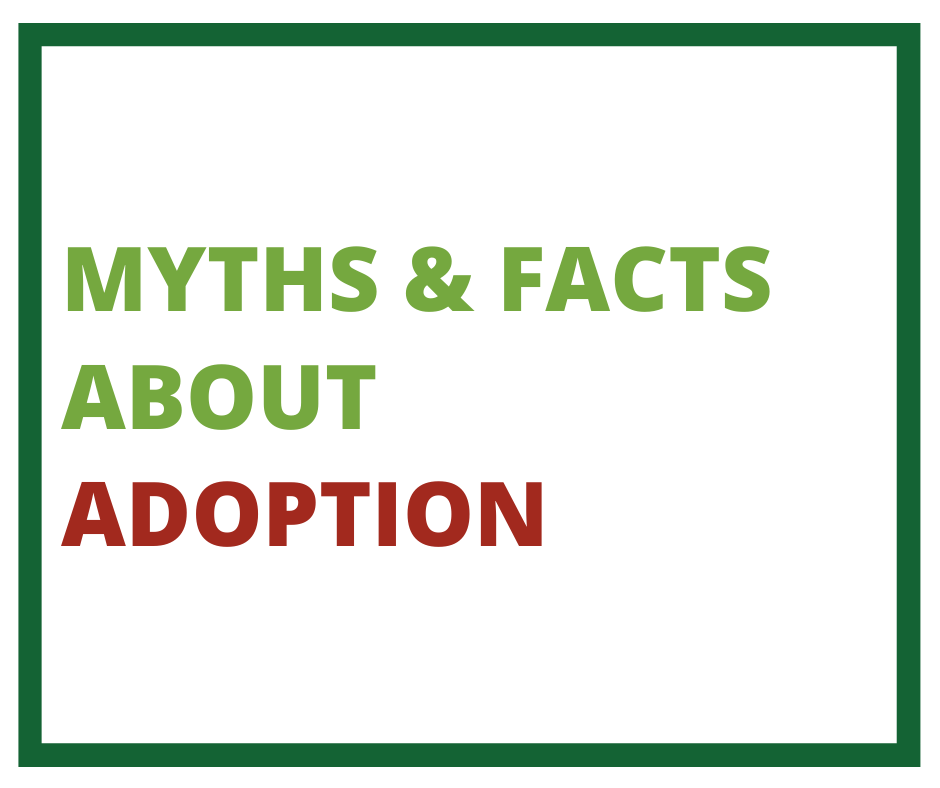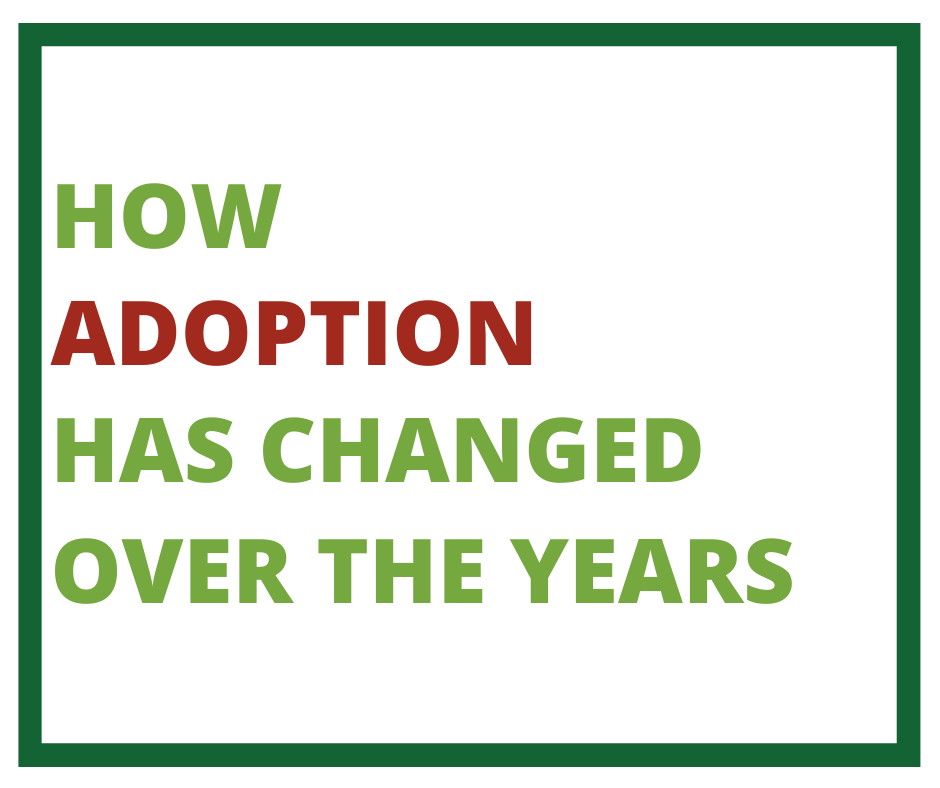Home > Myths & Facts about Adoption
Abigail Lee
Foster Parent Recruiter
HopeTree Family Services
It’s National Adoption Month. Adoption is both beautiful and complex. During this month, we celebrate families who are formed by adoption, raise awareness about adoption and the need for more adoptive families, and honor the grief and loss experienced by birth families who have chosen or had the choice made for them that their child would be adopted by another family. There are many myths and stereotypes surrounding adoption and we’d like to take some time to share with you some truths about adoption.
Myth: Adoption is for couples who are not able to have children biologically.
Fact: According to the U.S. Census, about half of all families who have at least one adopted child also have biological children. There are many reasons families choose to adopt: some parents choose to adopt after an infertility diagnosis, some choose to adopt because they have a prior relationship to the child, some choose to adopt because they know there are children who need adoptive families and they want to be that family. It’s not very polite to ask a family why they chose to adopt or to assume that you know the reasons. However, if you know an adoptive family it is helpful to express your support for their decision to adopt and share how happy you are to get to know all the wonderful children who are in their family!
Myth: All people who were adopted were adopted as babies.
Fact: There are three major types of adoption: 1) Parental placement adoption. In this type of adoption, a birth parent makes a decision to place their child in an adoptive family. This type of adoption makes up 15% of adoptions in the United States each year and children adopted through parental placement are typically babies. 2) International adoption. This is adoption of a child from another county. This type of adoption makes up 26% of adoptions in the United States and children adopted internationally can be in any age range. 3) Adoption from foster care. This type of adoption makes up 59% of adoptions each year in the United States and children adopted from foster care range in age from 0-18 years old, with the average age being 8-years-old. [1]
[1] Information found on the adoption network website: https://adoptionnetwork.com/adoption-myths-facts/domestic-us-statistics/
Myth: There is a really long waiting list for parents who want to adopt.
Fact: The wait time for an adoption depends on the type adoption (see the three major types described above). Typically adoption from foster care is a shorter wait time than parental placement or international adoption. There are over 100,000 children in foster care in the United States waiting for adoptive families. For people wishing to adopt from foster care, there are many agencies who can provide training and support to parents so they will have the skills to parent the children who need adoptive families. This training and home study process usually does take a few months, with the exact timing depending on the adoption agency. Families wishing to adopt should ask specific questions about timelines to the adoption agency they’re working with. In some cases, these timelines can be sped up for families wishing to adopt a child who are already waiting for a placement.
Myth: One must be rich to adopt a child.
Fact: Children are expensive. This is true of children who join a family through birth and children who join a family through adoption. All families with children make financial sacrifices for their children. But one does not need to be rich to adopt a child. There are many factors that determine the fees associated with adoption and, in some cases, there are grants and programs to help families who wish to adopt and who can’t afford certain fees. If you are interested in adopting a child and you would like information about fees to determine if you can afford adoption, you can contact your local adoption agency for information. It is never appropriate to ask an adoptive family how much their adoption costs – just as you would not ask someone how much their hospital stay cost when they gave birth. This information is private.
Myth: People who are adopted are supposed to forget their past and join their adopted family with a “clean slate.”
Fact: People who are adopted share love and loyalty with two families, their birth family and their adopted family. Connection to birth family and adoption story is important to an adoptees development and sense of identity. When they are not able to maintain contact with their birth family, it’s important that they know as much as possible about their family of origin and adoption story. In many cases, a person who is adopted can maintain a relationship with their birth family. Sometimes this is in the form of cards or letters or sometimes visits or phone calls. This does not take away from the love and loyalty they feel for their adopted family. In adoption, it’s best when all family members, birth and adopted, love and support each other.
Myth: Adoption is rare.
Fact:
One out of every 25 families in the United States with children have at least one adopted child. And 6 out of 10 Americans have personal experience with adoption, which means that either they or someone they have a close relationship with was adopted, has adopted a child, or placed a child for adoption. [2] Let’s work together to normalize adoption in the way we talk about it. It is more prevalent in our society than we may realize.
[2] Information found on the adoption network website: https://adoptionnetwork.com/adoption-myths-facts/domestic-us-statistics/



